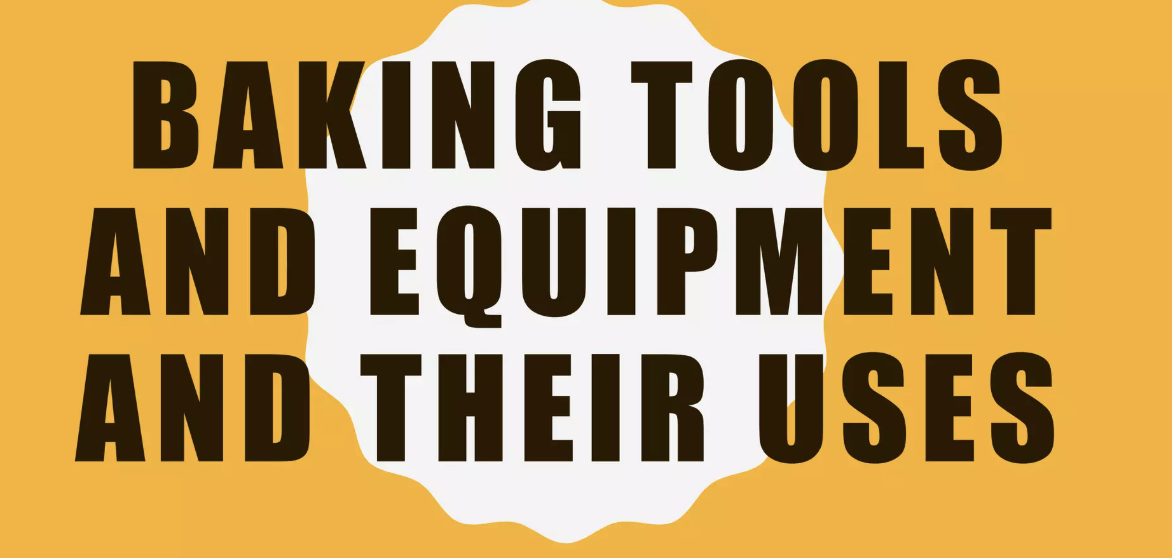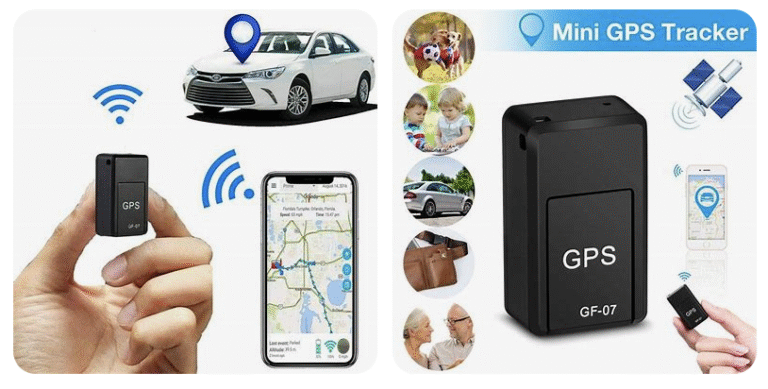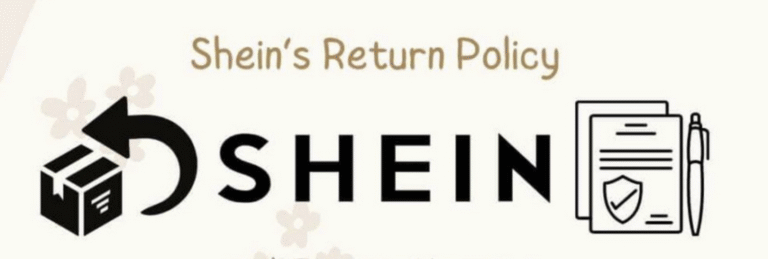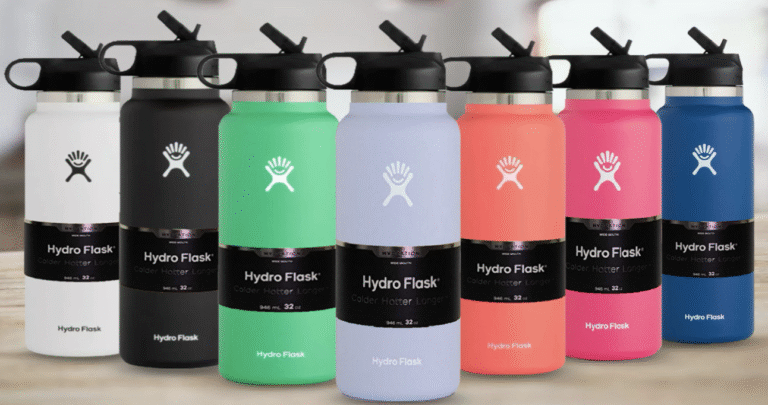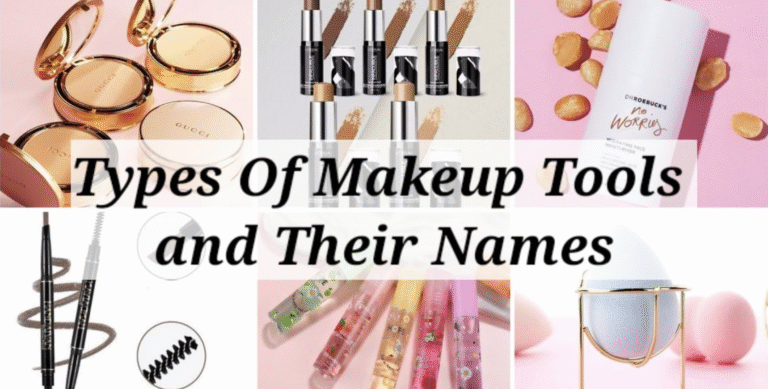50+ Baking Tools and Equipment and Their Uses: The Ultimate Guide for Home Bakers
Let’s be honest—great baking isn’t just about having the perfect recipe. It’s about using the right tools and equipment to make that recipe come to life.
Whether you’re just starting out or you’ve been baking for years, understanding which tools to use—and how to use them—can be a total game-changer in your kitchen.
Have you ever had a cake come out uneven or cookies that just wouldn’t crisp right? Often, the culprit isn’t your ingredients—it’s the tools.
That’s why knowing the baking tools and equipment and their uses is the foundation of baking success.
This comprehensive guide breaks down over 50 must-have items you’ll find in pro kitchens and home bakeries alike, organized by category so you can easily pick what fits your style and budget.
Table of Contents
1. Measuring Tools
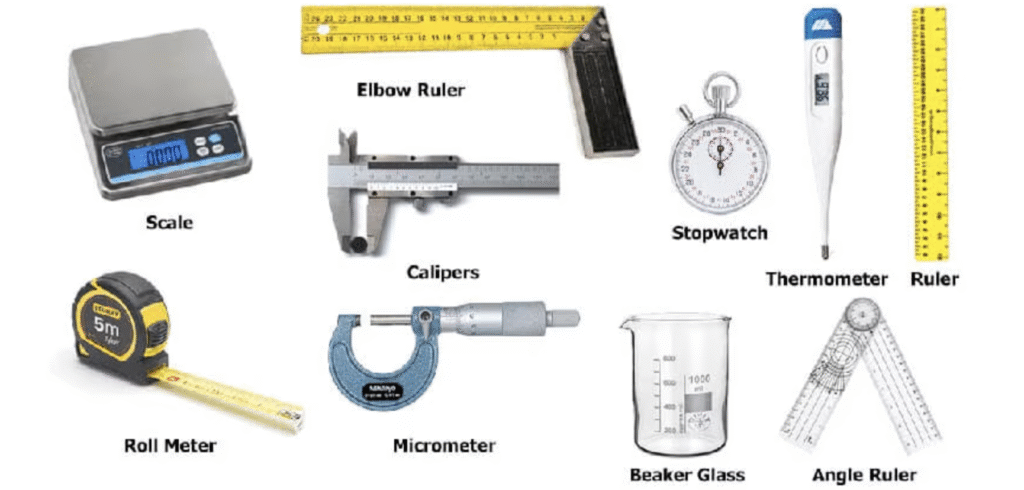
Precision is key in baking. Unlike cooking, where you can improvise a bit, baking requires exact measurements for flour, sugar, and liquids. That’s where these tools shine:
Measuring Cups
- Dry measuring cups come in sets (usually 1/4, 1/3, 1/2, and 1 cup).
- Ideal for flour, sugar, and cocoa powder.
- Always level off dry ingredients with a knife for accuracy.
Measuring Spoons
- Essential for small quantities like baking soda, salt, or vanilla extract.
- A set typically includes 1/4 tsp up to 1 tbsp.
- Stainless steel versions are most durable.
Digital Kitchen Scale
- The gold standard for baking accuracy.
- Measures by weight in grams or ounces—great for flour and butter.
- Ideal for following international recipes.
Pro Tip: Use the “tare” function on digital scales to subtract the bowl’s weight—it makes measuring fast and clean.
2. Mixing Tools
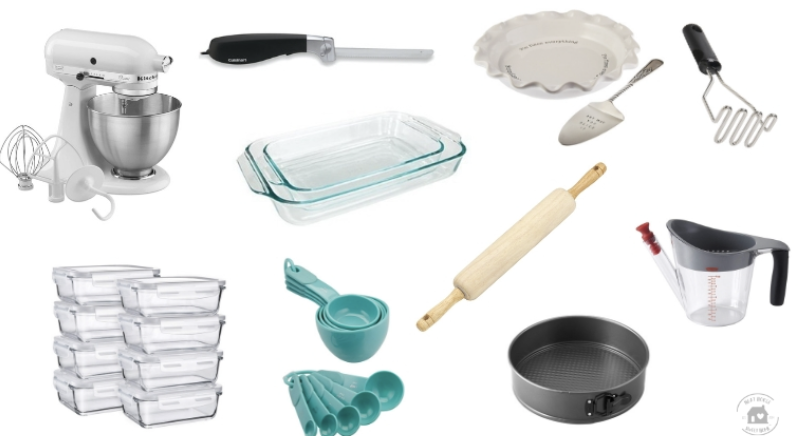
Before anything goes in the oven, it has to be mixed right. Lumps, poor blending, or overmixing can ruin your batter. These are the tools that help:
Mixing Bowls
- Get a set of at least 3 sizes (small, medium, large).
- Stainless steel bowls are light and durable; glass bowls are microwave-safe.
- Great for holding dry or wet ingredients during prep.
Hand Mixers
- Perfect for whipping cream, beating eggs, or mixing cookie dough.
- Lightweight and easy to clean.
- Look for variable speeds for more control.
Stand Mixers
- The workhorse of many kitchens.
- Ideal for bread dough, large cake batters, and multitasking.
- Includes attachments like dough hooks and paddles.
Whisks
- Balloon whisks incorporate air (perfect for whipped cream or meringues).
- Flat whisks help mix sauces and roux.
- Silicone whisks are safe for non-stick surfaces.
Bonus Tip: Always start mixing at low speed to prevent flour clouds all over your kitchen!
3. Baking Pans and Trays
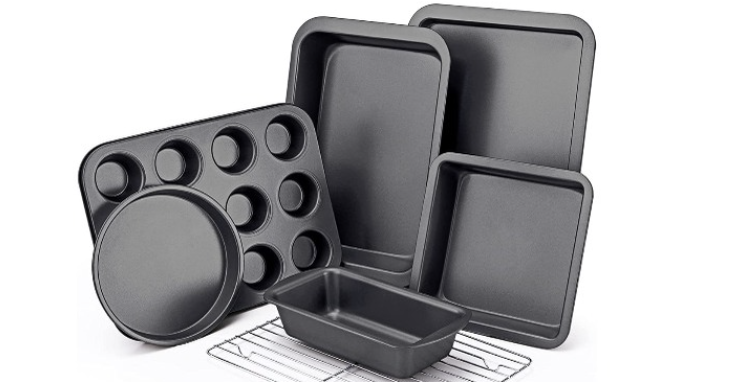
The shape and material of your baking pans can dramatically impact how your baked goods turn out. Here are the essentials:
Cake Pans
- Available in round, square, or rectangular shapes.
- Non-stick aluminum pans ensure even heat distribution.
- Springform pans are ideal for cheesecakes and layered cakes.
Muffin Trays
- Also called cupcake pans.
- Typically come in 6 or 12-cup varieties.
- Use with liners for easy cleanup.
Loaf Pans
- Used for banana bread, pound cake, or sandwich loaves.
- Standard size is 9×5 inches.
- Metal or glass versions are both common.
Baking Sheets
- Flat pans for cookies, pastries, and roasting.
- Look for rimmed edges to prevent spills.
- Lighter sheets bake more evenly; darker ones crisp better.
4. Rolling and Shaping Tools
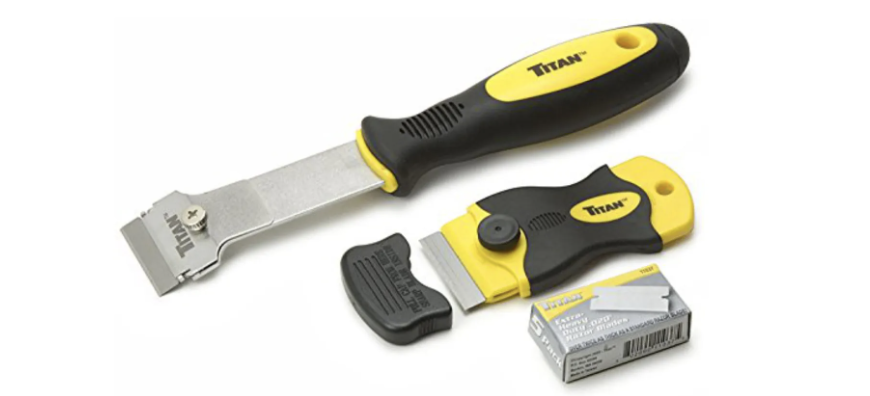
Rolling out dough and shaping your treats is just as important as mixing them. That’s where these tools come in handy:
Rolling Pins
- Wooden pins are traditional and absorb less flour.
- French-style rolling pins (tapered ends) give better control.
- Marble pins stay cool, ideal for pastry doughs.
Cookie Cutters
- Come in fun shapes and sizes—perfect for holidays.
- Stainless steel is best for clean cuts.
- Ideal for sugar cookies, biscuits, and fondant.
Pastry Wheels
- Used to cut decorative edges on dough.
- Can double as a pizza cutter in a pinch.
- Great for lattice pie tops or puff pastry.
5. Cutting and Portioning Tools
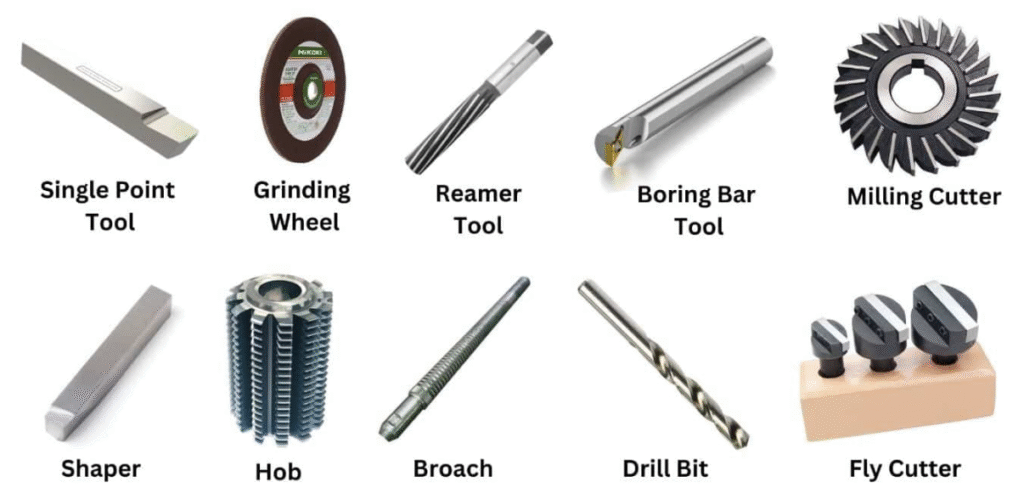
Ever tried portioning cookie dough by eye and ended up with burnt mini cookies and undercooked giants? These tools fix that.
Dough Scrapers
- Help lift and divide dough without sticking.
- Bench scrapers are great for cleaning your work surface too.
- Flexible scrapers are good for scooping into bowls.
Pastry Cutters
- Used to cut butter into flour for biscuits and pie dough.
- Look for sturdy metal blades and an ergonomic handle.
Kitchen Scissors
- Perfect for snipping herbs, opening pastry bags, or trimming parchment paper.
- Keep a dedicated pair for food use only.
6. Decorating Tools
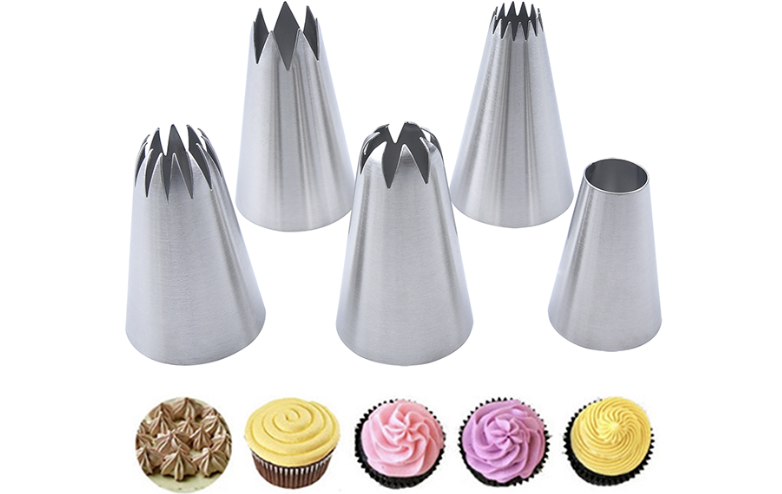
Baking is part science, part art—and when it comes to the artistic side, decorating tools are your best friends. Whether you’re piping buttercream roses or adding ganache swirls, the right tools will take your bakes from homemade to professionally polished.
Piping Bags and Tips
- Reusable silicone or disposable plastic piping bags are available.
- Metal tips (nozzles) come in various shapes: star, round, leaf, petal, and more.
- Ideal for frosting cupcakes, decorating cookies, or filling doughnuts.
Pro Tip: Use a coupler inside your piping bag to easily switch tips without changing the bag.
Offset Spatulas
- These angled spatulas are essential for spreading frosting smoothly.
- Use the small size for cupcakes and the large one for layer cakes.
- Also handy for lifting delicate cookies or spreading batter evenly in pans.
Cake Turntables
- Allows smooth 360° rotation while decorating.
- Makes frosting and piping designs easier and more consistent.
- Look for ones with a non-slip base and sturdy design.
Even a beginner can create bakery-level finishes using just these three tools. Practice makes perfect—and you’ll be amazed at how fast your skills grow with the right gear.
7. Baking Mats and Liners

No one likes sticky dough, burnt bottoms, or endless scrubbing. That’s where mats and liners come into play—they make baking cleaner, easier, and more efficient.
Silicone Baking Mats
- Non-stick, reusable, and eco-friendly.
- Fit perfectly inside standard baking sheets.
- Great for cookies, macarons, and roasting vegetables.
Parchment Paper
- Disposable and heat-resistant.
- Prevents sticking and helps with even browning.
- Can be used to create piping cones or line cake pans.
Cooling Racks
- Allows air to circulate around baked goods to cool evenly.
- Prevents soggy bottoms (especially for cookies and cakes).
- Stackable racks are great for small kitchens.
These humble items often go unnoticed but make a huge difference in your baking workflow. No more burnt cookies or stuck-on pastries—just smooth results every time.
8. Temperature and Timing Tools
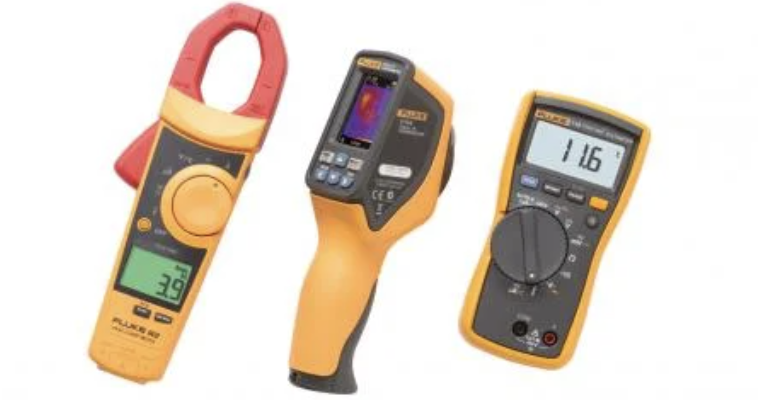
Even the best recipe can flop without precise control of time and temperature. Your oven lies more often than you’d think, so you’ll need these tools to keep it honest.
Oven Thermometers
- Place one inside your oven to check the true temperature.
- Essential for older ovens or those with hot spots.
- Ensure your cookies don’t burn at “350°F” when it’s really 400°F!
Timers
- Don’t rely on just your memory or oven buzzer.
- Use a standalone digital or mechanical timer.
- Essential for multitasking and perfect baking results.
Instant Read Thermometers
- Measures internal temperature of cakes, bread, or meats.
- Ideal for ensuring food safety and perfect doneness.
- Bread is done around 190–200°F; cakes between 205–210°F.
With these tools in your kitchen, you take the guesswork out of baking and lock in consistency with every batch.
9. Specialty Baking Equipment
Some bakes call for tools that aren’t in every kitchen—but if you’re serious about baking, they’re worth the investment. These are the specialty items pros swear by.
Dough Proofers
- Maintain consistent warmth and humidity for rising dough.
- Speeds up proofing for bread and pastries.
- Can be replaced with a warm oven and damp towel in a pinch.
Pastry Brushes
- Used to apply egg wash, glaze, or melted butter.
- Silicone brushes are easier to clean; natural bristles offer better control.
- Also great for greasing pans or dusting flour off pastries.
Sifters and Sieves
- Break up clumps in flour or powdered sugar.
- Aerate dry ingredients for better texture.
- Sieve can also be used for dusting cakes or sifting cocoa powder over tiramisu.
If you’re planning to dive into advanced baking—like laminated doughs or artisan bread—these tools are not optional. They make the complex tasks manageable and yield better results.
10. Storage and Cleaning Tools
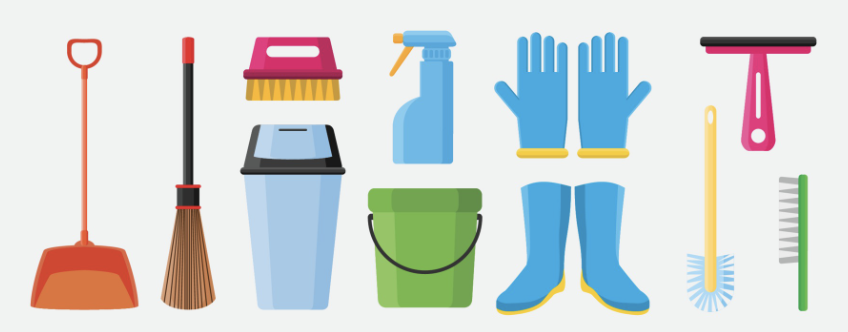
A clean and organized kitchen is the unsung hero of stress-free baking. From storing your ingredients to washing up afterwards, these tools keep your baking space and supplies in check.
Airtight Containers
- Keeps flour, sugar, and other dry ingredients fresh.
- Prevents pest contamination and moisture exposure.
- Transparent containers help you see what you’re low on.
Silicone Spatulas
- Flexible and heat-resistant—ideal for folding, scraping, or mixing.
- One-piece designs are easiest to clean and most hygienic.
- A must-have for getting every last bit of batter out of a bowl.
Dish Racks
- Helps dry tools without cluttering your counter.
- Use one side for sharp tools (cutters, knives) and the other for delicate items like piping tips.
- Prevents bacteria buildup from soggy drying cloths.
A well-kept baking space not only improves efficiency but also prolongs the life of your tools—saving you money and frustration in the long run.
11. Tools for Bread Baking
Baking bread isn’t just a hobby—it’s a craft. And like any craft, it demands specialized tools to help you shape, score, and bake the perfect loaf. If you’re venturing into artisan bread territory, these are the bread-baking essentials you’ll want in your arsenal.
Banneton Baskets (Proofing Baskets)
- Used to hold dough during its final rise.
- Helps maintain shape and creates beautiful flour rings on the crust.
- Available in round or oval shapes, made of rattan or plastic.
Lame (Scoring Tool)
- A razor-sharp blade used to slash the dough surface.
- Allows steam to escape and controls how the bread expands.
- Makes decorative scoring patterns for Instagram-worthy loaves.
Dutch Ovens
- Heavy cast-iron pots with lids, perfect for baking crusty artisan bread.
- Traps steam during baking to mimic professional steam ovens.
- Produces bakery-quality crust and chewy interiors.
Baking bread at home can be deeply satisfying, and with these tools, your loaves will look and taste like they came from a Parisian bakery.
12. Tools for Cake Decorating
Cake decorating is where creativity meets precision. From birthdays to weddings, beautifully decorated cakes make a statement. Here’s what you’ll need to bring your frosting dreams to life.
Fondant Smoothers
- Flattens and shapes fondant for a smooth, flawless surface.
- Prevents fingerprints or uneven textures.
- Essential for covering tiered or novelty cakes.
Stencils
- Used for adding patterns with dusting powders, icing sugar, or airbrushing.
- Reusable plastic or silicone stencils come in floral, geometric, and seasonal designs.
- Also great for cookie decoration.
Edible Ink Pens
- Perfect for writing messages, drawing details, or adding accents on fondant.
- Food-safe and available in multiple colors.
- Use on cookies, cupcakes, macarons, and cakes.
With these tools, your cakes will not only taste amazing—they’ll look like a masterpiece.
13. Tools for Chocolate and Candy Making
Tempering chocolate or making candy might sound intimidating, but it becomes much easier with the right tools. These allow for precision control, clean molds, and professional finishes in your sweet confections.
Candy Thermometers
- Essential for hitting the right temperature for candy stages: soft ball, hard crack, etc.
- Clips to the side of your pot to monitor temperature hands-free.
- Digital versions offer faster readings and alarms.
Chocolate Molds
- Silicone or polycarbonate trays that give chocolates their final shape.
- From simple hearts to elaborate truffles and bonbons.
- Ensure uniformity and easy unmolding.
Dipping Forks
- Used to coat candies, truffles, or fruit in melted chocolate.
- Allows excess coating to drip off for clean presentation.
- Comes in various shapes: spiral, two-prong, three-prong.
Whether you’re preparing chocolate bark or gourmet fudge, these tools help you create glossy, professional results every time.
14. Tools for Pastry and Pie Making
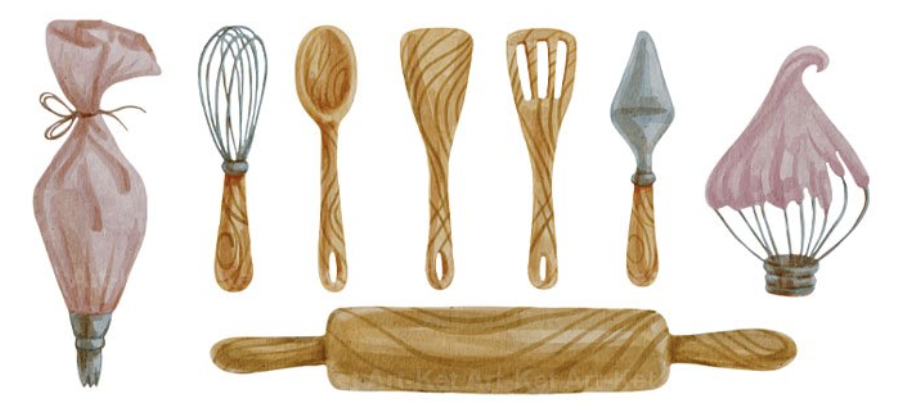
Pastry is all about texture and precision. Achieving that flaky crust or smooth tart base requires the right tools. Here’s what belongs in a pastry lover’s toolkit.
Tart Pans
- Fluted edges and removable bottoms allow easy release.
- Metal pans offer excellent heat conductivity.
- Available in individual or large sizes.
Pie Weights
- Keep crusts from puffing or shrinking during blind baking.
- Can be ceramic, metal, or even dry beans.
- Used with parchment paper for even distribution.
Pastry Blenders
- Helps cut butter into flour for flaky crusts without melting it.
- U-shaped blades with a comfortable handle.
- Avoids overmixing compared to using your hands.
With these tools, your pies and tarts will not only hold their shape but deliver the buttery, flaky perfection every baker dreams of.
15. Budget vs. Premium: Choosing the Right Tools
Not all tools are created equal—but you don’t need to break the bank to get started. Knowing when to save and when to splurge is key to building your dream baking setup.
Must-Haves for Beginners
- Measuring cups and spoons
- Mixing bowls
- Hand whisk
- Baking sheet and cake pans
- Silicone spatula
These basics cover 80% of most recipes and cost very little. Start here and upgrade over time.
Splurge-Worthy Tools for Serious Bakers
- Stand mixer (especially for bread and large batches)
- Dutch oven or high-quality cake pans
- Digital kitchen scale
- Piping tips and turntable for decorators
Investing in these items increases your efficiency and elevates the quality of your baking.
Tips for Upgrading Over Time
- Replace cheap tools as they wear out—especially whisks and spatulas.
- Buy in sets when possible to save money.
- Watch for holiday sales or bundle deals from baking brands.
Building your collection gradually ensures you only buy what you truly need, creating a well-equipped, clutter-free kitchen.
Table: Overview of Baking Tools and Their Uses
| Tool | Primary Use | Recommended For |
|---|---|---|
| Measuring Cups/Spoons | Measuring dry and liquid ingredients | All skill levels |
| Digital Scale | Precise weight measurement | Intermediate to Advanced |
| Mixing Bowls | Mixing batters, doughs, and ingredients | All skill levels |
| Hand/Stand Mixer | Beating, whipping, kneading | Intermediate to Advanced |
| Rolling Pin | Rolling out dough | All skill levels |
| Piping Bag & Tips | Decorating cakes and cookies | Intermediate to Advanced |
| Silicone Baking Mats | Non-stick surface for baking | Beginner to Pro |
| Oven Thermometer | Accurate oven temperature reading | All skill levels |
| Dutch Oven | Baking artisan bread | Intermediate to Pro |
| Tart Pan | Making tarts and pies | Intermediate |
| Candy Thermometer | Sugar work and chocolate tempering | Advanced |
| Fondant Smoother | Smoothing fondant over cakes | Intermediate to Pro |
Tips for Maintaining Baking Tools
Your baking tools are like your kitchen teammates—treat them right, and they’ll last for years. Here’s how to keep your tools in top shape:
1. Clean Immediately After Use
- Wash mixing bowls, whisks, and spatulas right after baking to prevent batter from hardening.
- Silicone mats and spatulas can go in the dishwasher, but always check labels.
2. Avoid Harsh Abrasives
- Use non-abrasive sponges to prevent scratching metal pans or silicone surfaces.
- For burnt residue, soak items in warm water with a bit of baking soda.
3. Store Tools Properly
- Keep piping tips in labeled containers.
- Stack mixing bowls and pans by size to save space.
- Hang spatulas, whisks, and measuring spoons on hooks for easy access.
4. Regular Checks and Replacements
- Inspect baking mats and spatulas for cracks or wear.
- Replace worn-out whisks and rusting pans to avoid contamination.
Taking just a little time to clean and store your tools correctly ensures better baking results and keeps your kitchen efficient.
Where to Buy the Best Baking Tools
You don’t have to travel far to build a dream baking toolkit. Here’s where to find high-quality baking tools:
1. Online Marketplaces
- Amazon – Huge selection, verified reviews, fast shipping.
- Etsy – Handmade and customizable baking gear.
- AliExpress – Budget-friendly options and tool sets.
2. Specialty Stores
- Williams Sonoma – Premium tools for serious bakers.
- Sur La Table – Excellent range for all baking levels.
- King Arthur Baking Company – Tools tested by professional bakers.
3. Local Kitchenware Shops
- Support local businesses and see products in person.
- Staff often offer helpful advice for choosing gear.
Top Brands to Consider:
- KitchenAid
- Wilton
- OXO
- Nordic Ware
- Silpat
Always read reviews, compare prices, and start with a list based on what you actually bake.
Conclusion
Whether you’re baking your first batch of cookies or whipping up a three-tier wedding cake, the tools you use can make all the difference. From mixing and measuring to shaping and decorating, the right gear empowers you to create with confidence, precision, and a whole lot of fun.
We’ve walked through over 50 essential baking tools and equipment and their uses, from must-have basics to specialty gear for the seasoned baker. Don’t feel pressured to buy everything at once—start small, invest smartly, and let your collection grow with your skills.
Remember: great bakers aren’t born—they’re made, one tool and one recipe at a time. So stock your kitchen, preheat that oven, and let your baking journey begin!
FAQs About baking tools and equipment
1. What’s the best baking tool for beginners?
Start with measuring cups, a mixing bowl, a whisk, baking pans, and a spatula. These cover most recipes and won’t overwhelm your setup or your budget.
2. Are expensive tools really better?
Not always. While quality matters, there are many budget-friendly tools that perform just as well. The key is to read reviews and avoid flimsy materials.
3. Can I bake with minimal equipment?
Yes! With just a bowl, a spoon, a measuring cup, and an oven, you can bake simple recipes like cookies and muffins. Upgrade as your needs grow.
4. What tools do professional bakers use?
Pros often use stand mixers, digital scales, bench scrapers, oven thermometers, and specialty tools like fondant smoothers or chocolate tempering gear.
5. How do I organize my baking supplies?
Use drawer dividers for small tools, stack pans vertically, hang utensils on hooks, and label containers. A clean setup makes baking more enjoyable and efficient.

